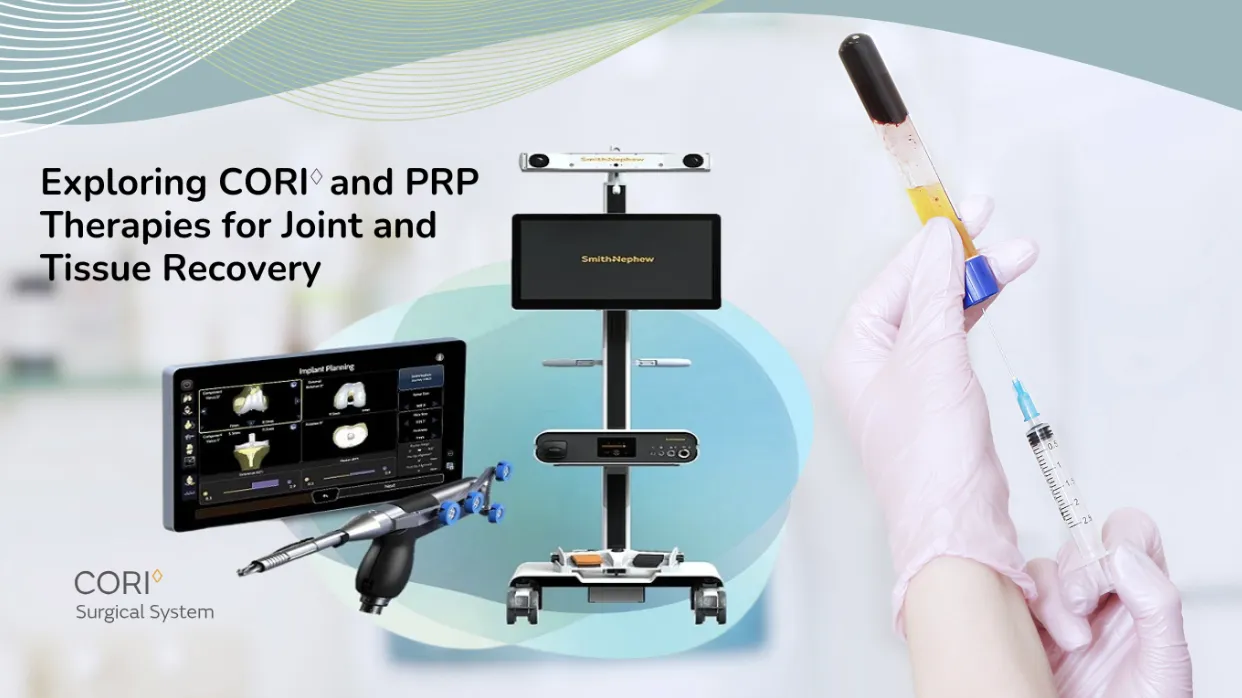
Managing joint discomfort or tissue injuries often requires thoughtful solutions tailored to individual needs. Syracuse Area Health – Strasburger Orthopaedics and Dr. Scott Strasburger provide access to advanced options for recovery, from robotics-assisted knee replacement procedures to treatments designed to support natural healing.
This blog highlights two approaches to orthopaedic care — the CORI◊ Robotics-Assisted Surgical System, and Platelet-Rich Plasma (PRP) Therapy. Explore their potential and how they may align with your recovery goals.
A Look at the CORI◊ Surgical System
Advancing Knee Surgery Techniques
Over the years, total and partial knee replacement surgeries have evolved significantly, moving from traditional methods towards more precise, technology-driven options. Robotics-assisted systems like CORI◊ offer tools that bring advancements in customization and detailed surgical planning.
Features of the CORI◊ Surgical System include the ability to guide procedures with precision through 3D modeling technology while utilizing implants tailored to individual anatomy. The system is designed to work without reliance on CT scans or alignment rods, offering a streamlined process.
Focused on Personalization
The CORI◊ Surgical System provides opportunities for tailored implants and techniques aimed at preserving as much natural anatomy as possible. These specialized methods also emphasize efficient surgical execution.
Whether it’s partial or total knee replacement, CORI◊ represents a step in precision and adaptability in surgical planning and execution.
Supporting Natural Recovery with PRP Therapy
While surgical systems address structural needs, some treatments aim to tap into the body’s own healing mechanics. PRP Therapy (Platelet-Rich Plasma Therapy) is one such approach, designed to utilize natural processes to support recovery and reduce discomfort.
Understanding PRP Therapy
PRP Therapy involves the collection and concentration of platelets from a patient’s own blood. These platelets are then injected into the target area, which may help promote recovery. PRP offers a minimally invasive option that is entirely derived from the individual’s own body.
Steps of the PRP Process
PRP therapy includes:
- Drawing a small amount of blood.
- Processing it to concentrate platelets.
- Injecting the preparation into specific sites to encourage natural healing mechanisms.
For many, PRP can be incorporated alongside other therapies or post-surgical plans.
Complementing Care
The approaches of CORI◊ Surgical System and PRP Therapy complement one another on the path to recovery. One focuses on precision and structural solutions, while the other supports restorative care that works with the body’s natural processes.
Dr. Scott Strasburger focuses on providing care options guided by innovation and attention to patient comfort. Whether through advanced robotics or regenerative therapy, the team invites you to learn more and explore what might work for you.
